Written with assistance from Kristen Haas, Environmental Educator at Park and Recreation
If the word “snake” is enough to make you shudder, you’re not alone. Snakes are feared by many and no matter how often we try to convince you that they’re not that bad, chances are you’ll still want to keep your distance. But that’s not such a bad thing – respecting wildlife often means keeping it at arm’s length (or further, depending on the creature). It also means being educated about the types of wildlife you are likely to encounter whether you’re out and about or just working in the yard.
The truth is, most snakes in North Carolina (and the world) are NOT harmful to humans. Still, it’s nice to know what you’re dealing with. We’ve put a list together of a few of the snakes that you’re most likely to see here in Mecklenburg County. The coolest fact of all: They aren’t out to get you! Snakes are really interesting and beautiful creatures that are important to our ecosystem – both as predators AND prey.
See a snake that’s not on the list? Visit herpsofnc.org for a more comprehensive list of snakes in NC (and much of the info this blog post was based on). And of course, we’d always love to have you at one of our three nature centers where you can talk directly to our nature experts.
Brown Snake and Worm Snake, non-venomous
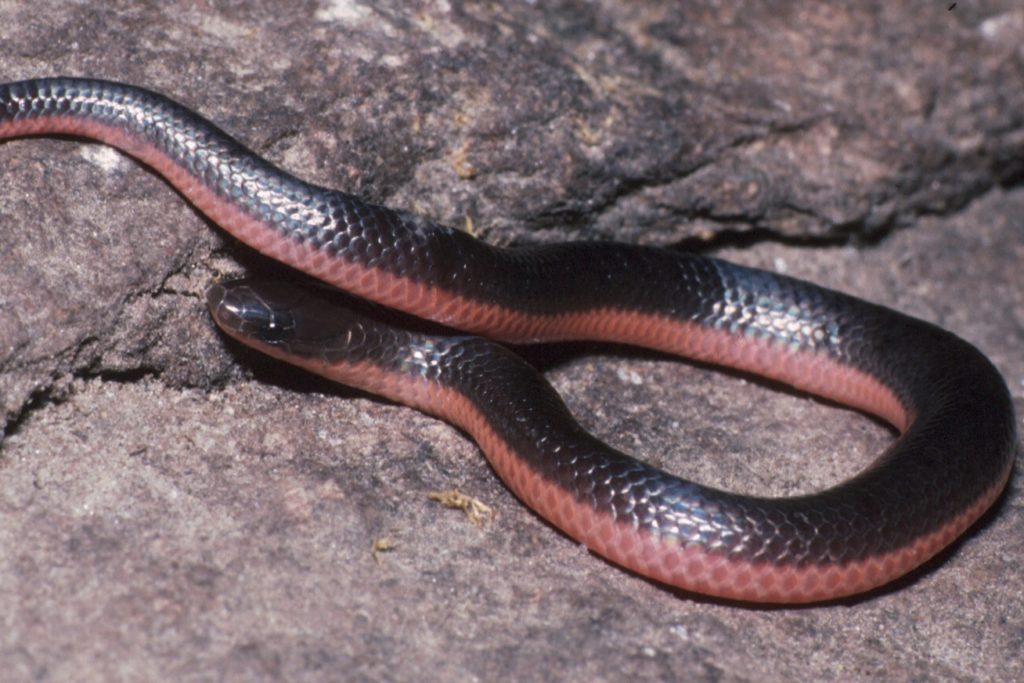
A wiggly worm snake. (Photo by RW Van Devender) 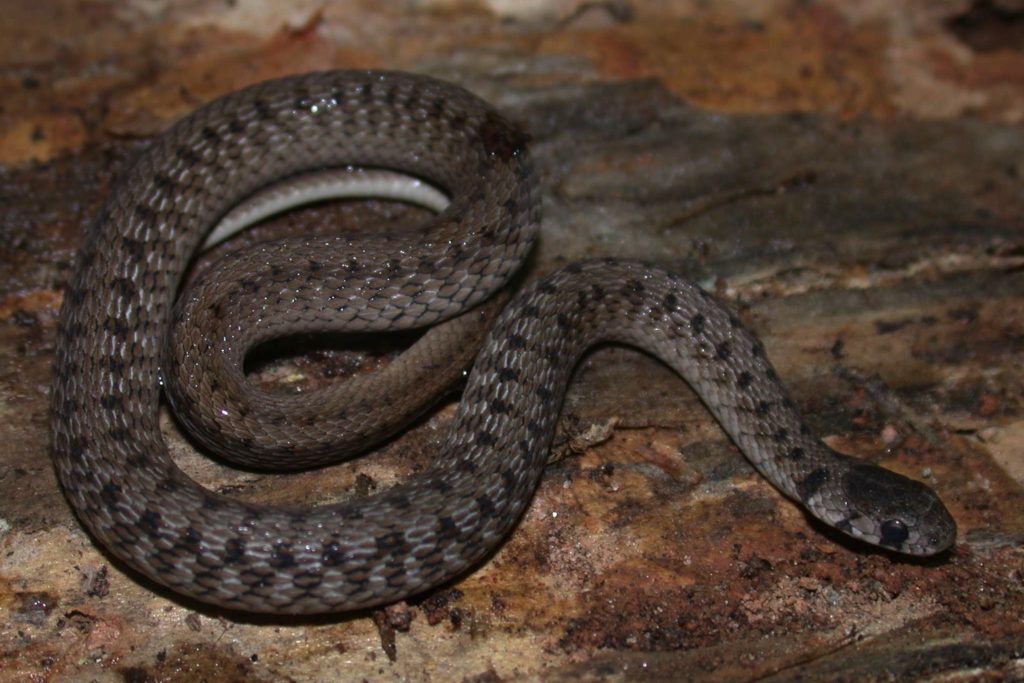
Rows of small dark spots on the brown snake’s sides. (Photo by JD Wilson)
These snakes are the ones our environmental educators see neighbors post about most often on Nextdoor – they are exceptionally common to the area. Both are pencil-sized “noodles.” Brown snakes can get up to 20 inches but normally these two snakes are only between 9-10 inches long. Worm snakes are shiny with black gray or brown backs with pink or whitish bellies. They never bite, but they are very wiggly! Brown snakes are usually … well, brown. Both are natural pest controllers – you can find them in flower beds or under logs eating slugs, earthworms and snails.
The Northern Water snake, non-venomous
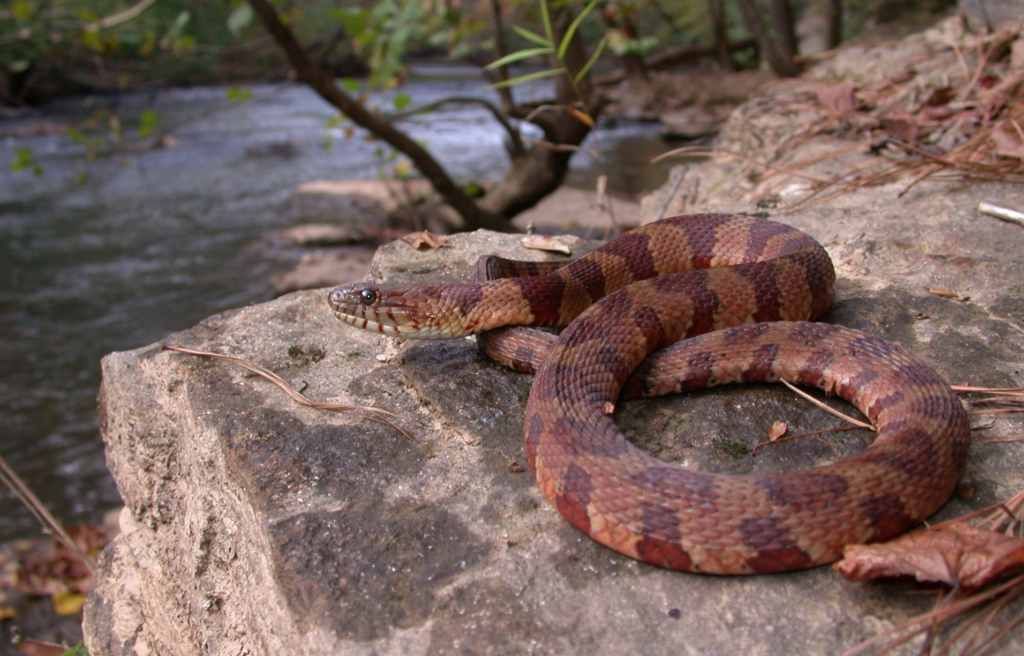
A northern watersnake basking on a rock. (Photo by JD Wilson)
Sometimes mistaken for copperhead or cottonmouth snakes, the northern water snake can be hard to identify because of its various possible colors. It may be gray, reddish, brown, or black – the key is that the front of the body is usually made up of a crossbanded pattern that breaks up into three alternating rows of blotches toward the middle and back of the body. Northern water snakes are active both day and night and typically found around aquatic areas either swimming or basking in the sun. They can be aggressive and will certainly bite if threatened. If you see one flattening its body and spreading its jaws, that’s a warning sign for you to make your exit.
Black Racer, non-venomous
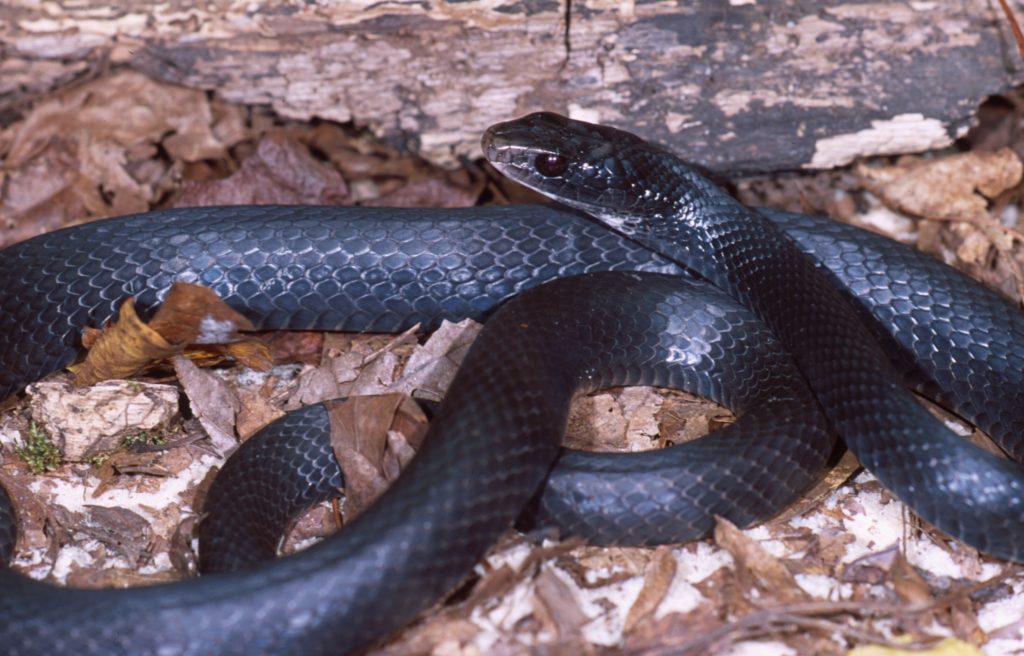
Found all across North Carolina, black racers are known for their speed (hence the name). They don’t even bother to constrict their prey – they just chase it down and eat it alive. But don’t worry, while they’re fast for snakes, a human can easily outrun them (you’re not the prey they’re looking for anyway). Black racers are defensive and will bite when handled, but typically choose to run when pursued. Their bodies are smooth, slender, and uniform color, which is how they can be distinguished from black rat snakes.
Corn Snake, non-venomous
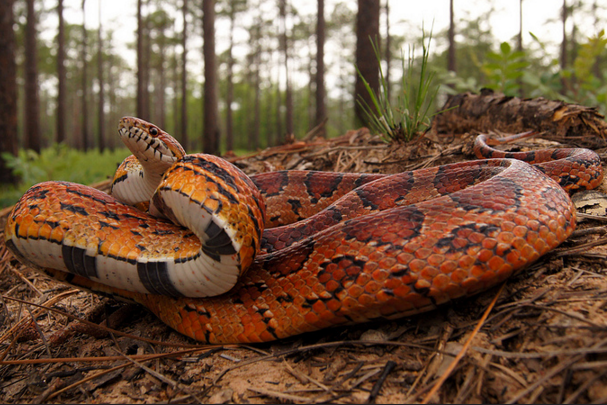
Corn snakes can look pretty menacing because of their size and blotches of red and orange. On the contrary, they are often bred as pets because of their beautiful and varied colors, and generally docile nature. Corn snakes get their name because they commonly live in corn fields and barns, where their favorite prey, mice and rats, are easily hunted. For this, they have earned the nickname of ‘farmer’s helper’. Sadly, they are often misjudged as copperheads and killed. Corn snakes are secretive, coming out mostly at night, so you are much less likely to encounter one than any of the other species discussed here.
Black Rat Snake, non-venomous
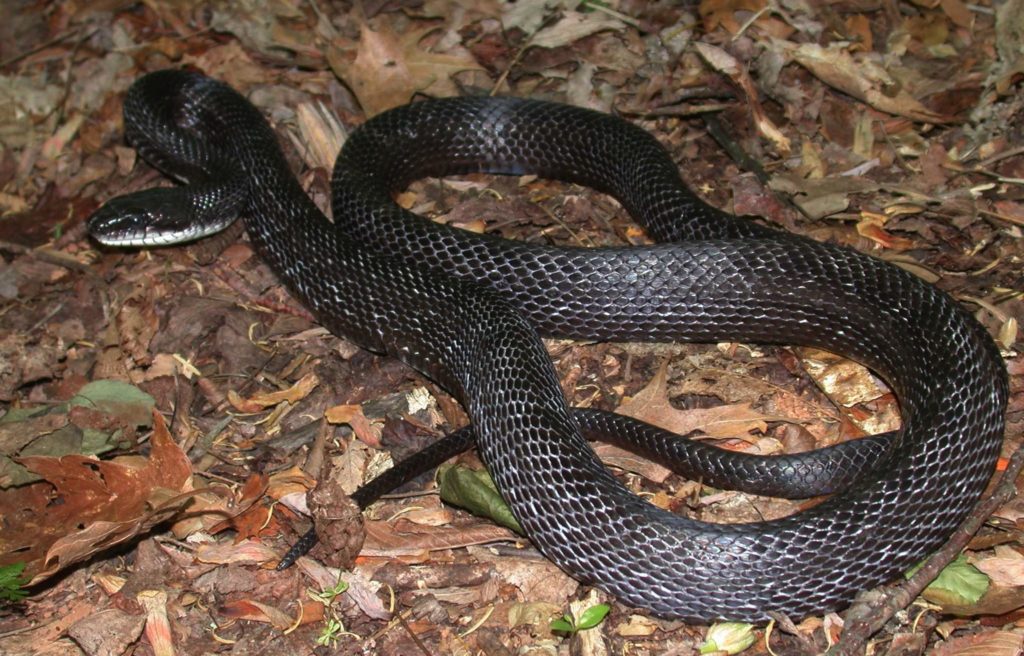
The keeled scales of the rat snake help when climbing trees. 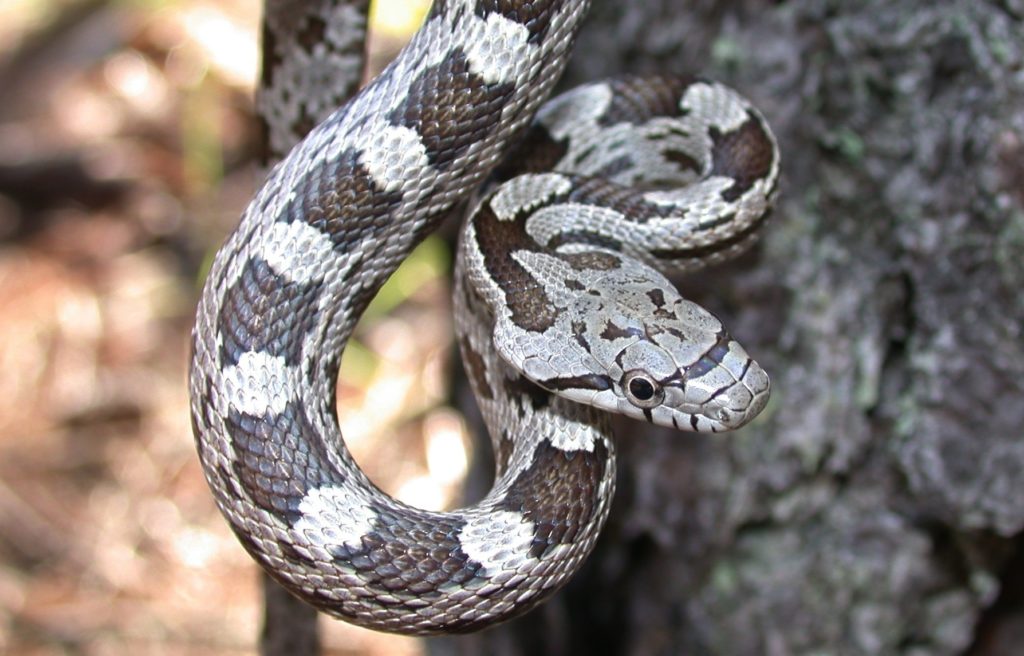
A juvenile rat snake has a more distinct pattern. (Photos by JD Wilson)
This is the most-common snake that people encounter in North Carolina. Black rat snakes are born with a blotchy pattern of dark and light that changes to mostly black on top with a white throat and belly as they mature. Rat snakes are known for their expert climbing skills, and are the snakes commonly found around your house (or sometimes, in your garage, attic, or chimney). They love to lay in the sun for warmth, and may stay quite still, even when approached. If threatened, they may bite, but that’s not their only defense mechanism – they can also release a foul-smelling musk.
Eastern Kingsnake, non-venomous
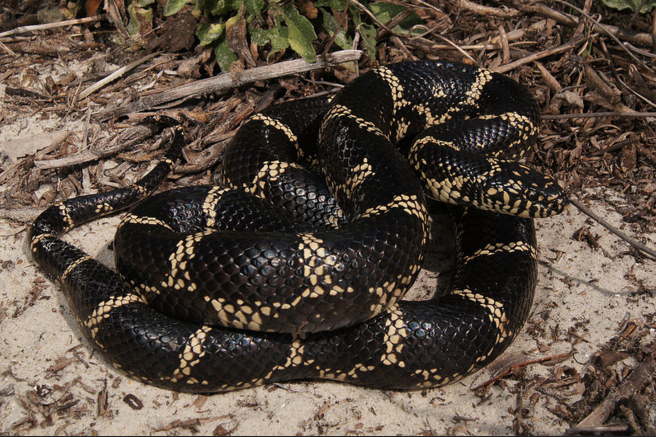
If it’s possible for a snake to bring you peace of mind, this is the one to do it. In addition to preying on rodents, kingsnakes also eat the venomous snakes like copperheads! You can identify this snake by its yellow or white chain-like pattern on a black background. They live in various habitats, from farms to suburban areas, and can often be found taking refuge under old boards/tin or near water sources.
Copperhead Snake, venomous
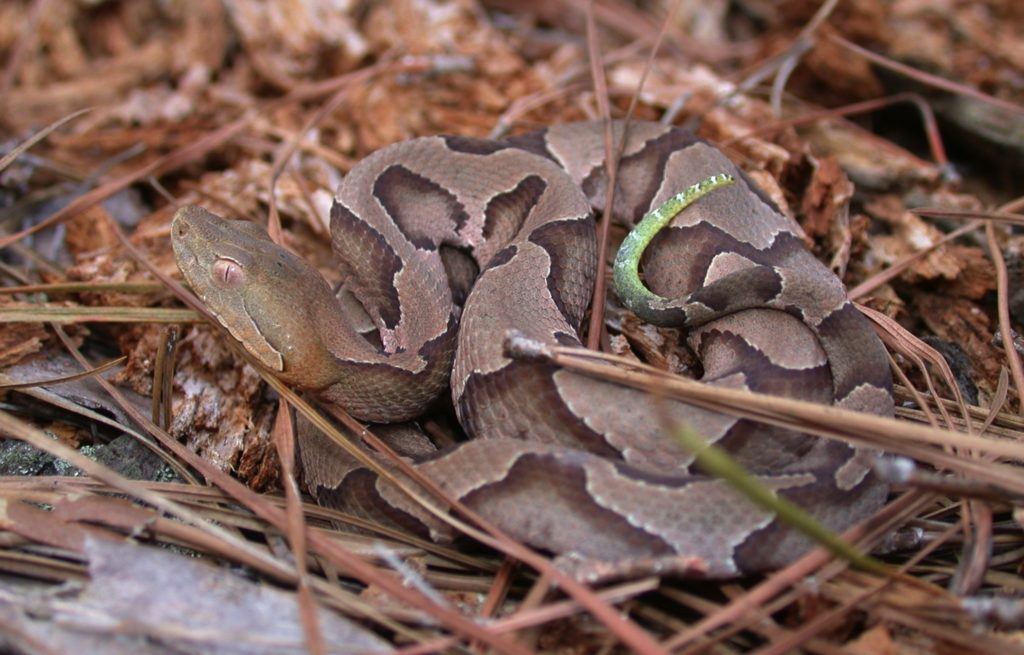
Juvenile copperheads have a bright yellow or green tail. (Photo by JD Wilson) 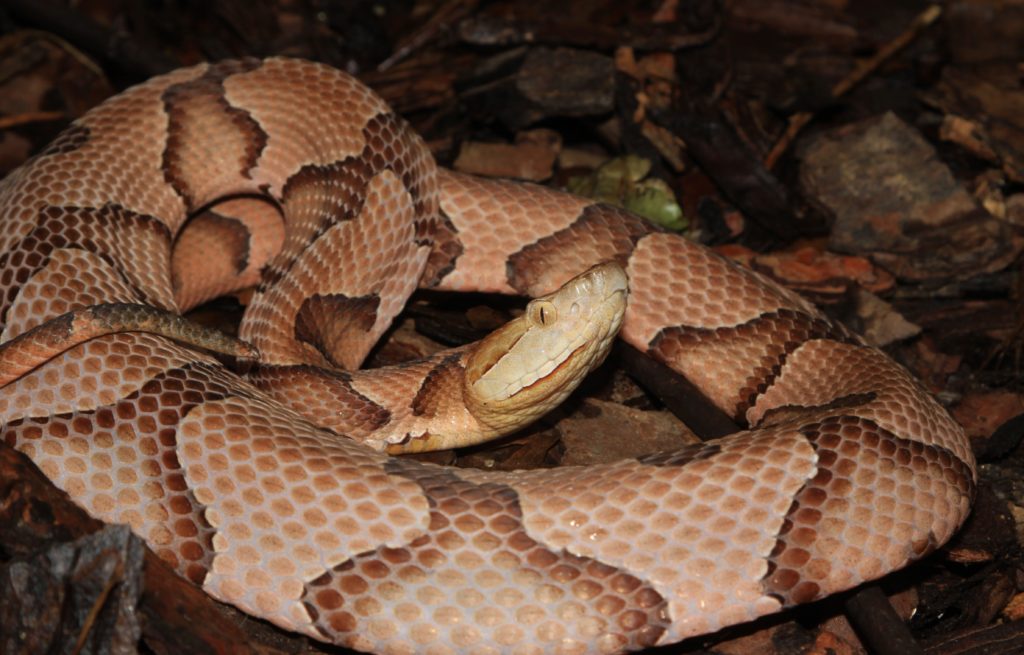
Note the hourglass crossbands. (Photo by Ian Deery)
As you probably are aware, this snake is the most-common venomous snake in North Carolina. Copperheads are marked with dark brown, hourglass shaped crossbands on a light brown or gray background. The babies have similar markings but with a bright yellow or green tail. Typically, these snakes are found in forested areas and are active at night but they do come out to bask in the sun during the day. If disturbed they will often vibrate their tail and release a musk. If severely threatened they will bite, and though it can be very painful, their venom normally isn’t fatal to humans.
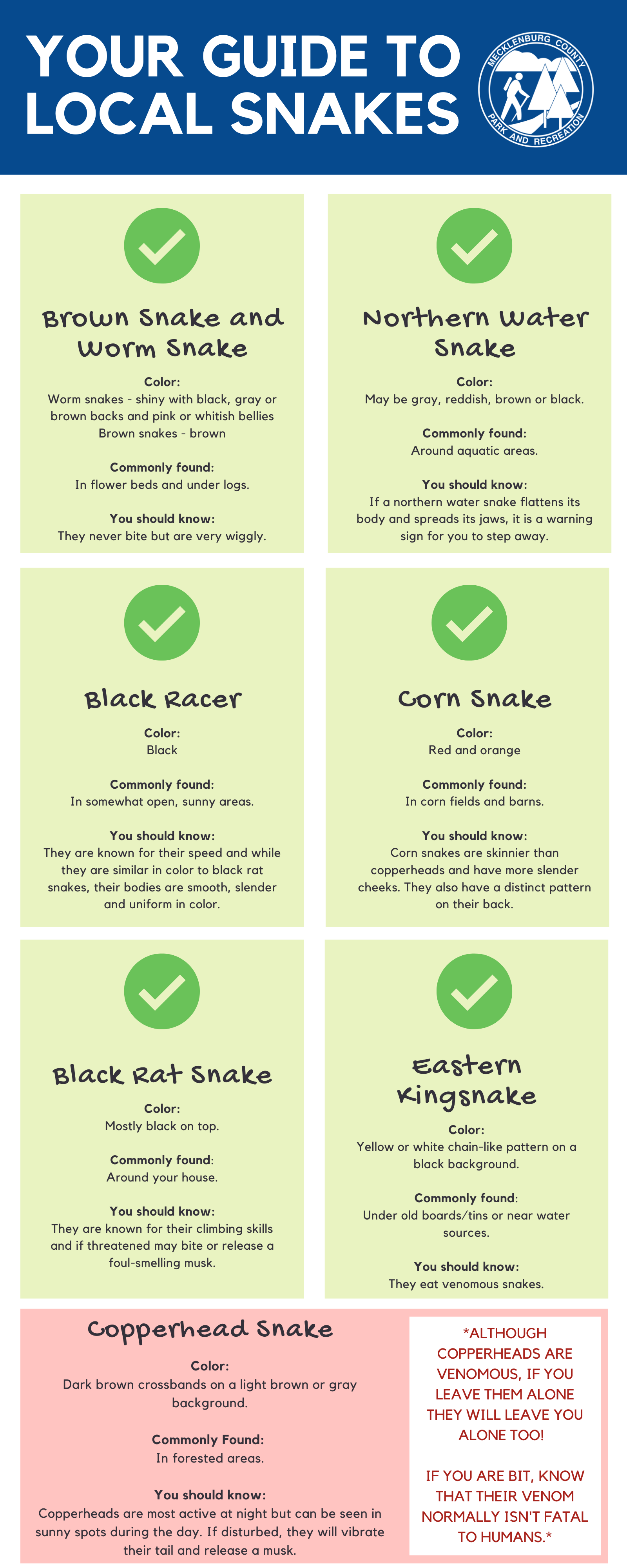
(All photos from HerpsOfNC.org)
